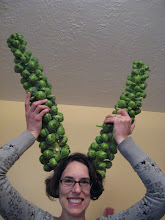How to Wash Your Hands, Pt. 1
 The New York City Department of Health and Mental Hygiene’s Health Academy has granted me a Mobile Food Vendor License. In short, I passed my 15-question test with flying colors. So, probably, did every other person in the room with a pulse. A cheat sheet for the test would read: Hot food hot, cold food cold, wash hands after poop, danger zone bad.
The New York City Department of Health and Mental Hygiene’s Health Academy has granted me a Mobile Food Vendor License. In short, I passed my 15-question test with flying colors. So, probably, did every other person in the room with a pulse. A cheat sheet for the test would read: Hot food hot, cold food cold, wash hands after poop, danger zone bad.Anyone working at a mobile food vending unit in New York City needs this license, and the only way to get it is by taking a two-day food-handling class up in Harlem. Those wishing to work in a restaurant here in New York need to take a five-day class, which I did as part of my curriculum at the Culinary Institute of America in 1997. But that class (even if it is three days longer) will not do for a Mobile Food Vendor License—nope, you have to learn information specific to serving food from a pushcart.
It costs $56 to enroll in the class, which culminates in a pass/fail test. I made sure to bring a good book and a new issue of The New Yorker to my first day of class, because I assumed I’d be bored witless.
It wasn’t so bad—with the exception of the first hour. We started at 12:30, not noon, which we had been told was the starting time. Perhaps this was a trick, because the classroom’s fifty-odd desks were not filled until 12:29. I’d read an article about surfboard blanks and started one about the reconstruction effort in New Orleans by the time our instructor showed up. He was a small man with very dark skin, and I’m not sure where he was from originally, but he had an intriguing accent.
The first half-hour of class consisted of roll call. Akin, the instructor, called out our names, and one by one we walked up to his desk to show him a photo I.D. He then issued us workbooks in the appropriate language. I considered opting for a Spanish workbook just for a challenge, but I stuck with English.
Men and women of all ages and races were there with me. Everyone seemed surprisingly attentive and earnest, not cynical at all. The classroom, which smelled like cleanser, resembled the classrooms I’d sat in during high school, except this classroom had a full-blown mobile food vending cart pushed up against the left wall. It was a shiny new model, quite similar to the cart I’d be using, but instead of a grill it had a flattop.
After the endless role call, Akin the instructor told us a bit about himself. He’d been a health inspector for 7 years, and a supervisor for 6. I’m not sure how long he’d been teaching this class, but he had a good method based on repetition and reinforcement. He’d tell us a few key points, ask us questions about them, and then we’d repeat them back at the end of the section. The biggest key points were about washing hands (you need to do it with soap and warm water, rubbing the hands together vigorously for at least 20 seconds) and keeping food out of the danger zone (germs thrive between 41 and 140 degrees F, and will double in half an hour when stored between these two temperatures).
Akin had an amusing way of talking about the symptoms of food-born illness. He clutched his stomach and then bent over a bit and went “brtt, brtt, brtt”…the sound of puke or diarrhea hitting the bowl of a commode. I’ve had food poisoning before (who hasn’t?), and it makes me think that even very clean establishments can slip up. The world is so full of germs—germs on food, germs on poop, germs on hands, germs on doorknobs, germs on hair—that it’s amazing we’re all not dead. Personally, I think some of these people who are so concerned about germs and have antibacterial soap and spray and hand gel probably slip up themselves. Have you ever counted to 20 when washing your hands? It’s a long time, man. No one washes their hands for a full 20 seconds unless they are a surgeon. For all you folks who visit the sausage cart, though, I’ll try.


0 Comments:
Post a Comment
<< Home